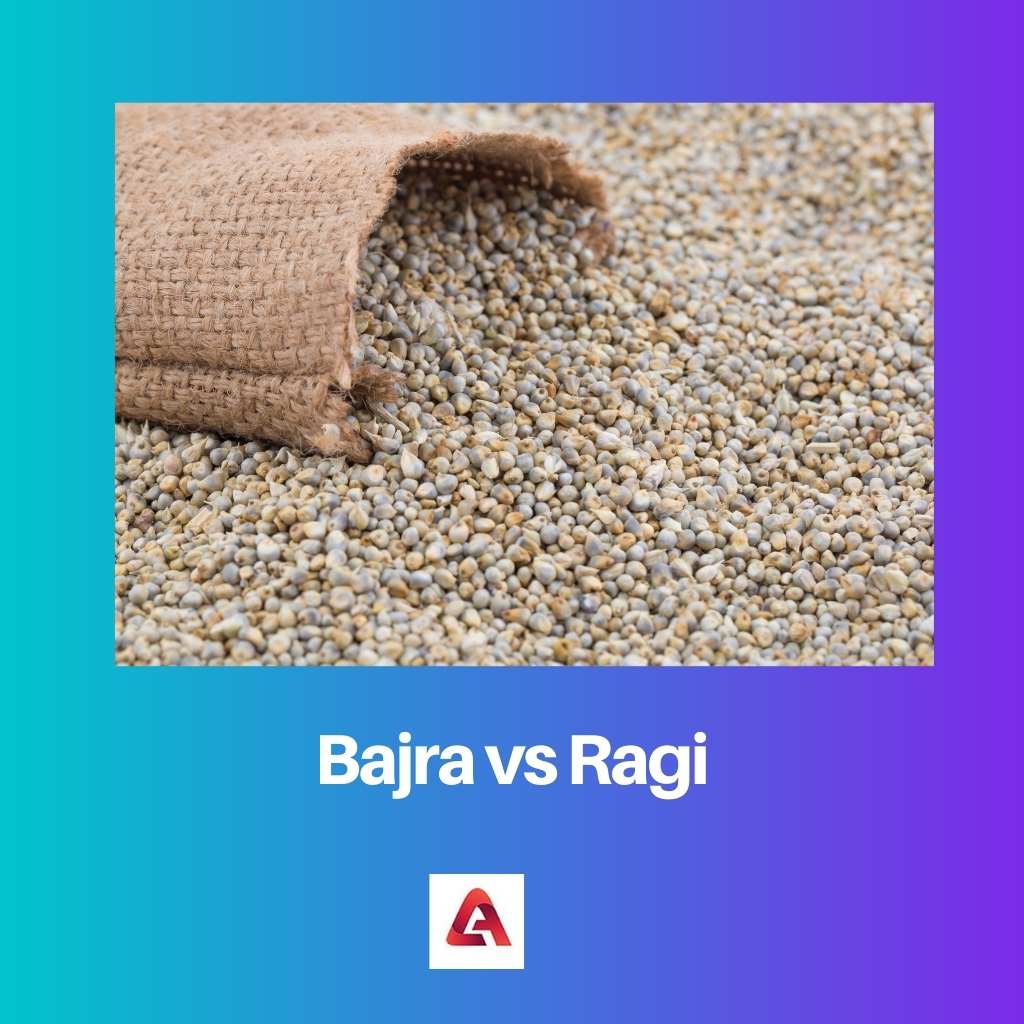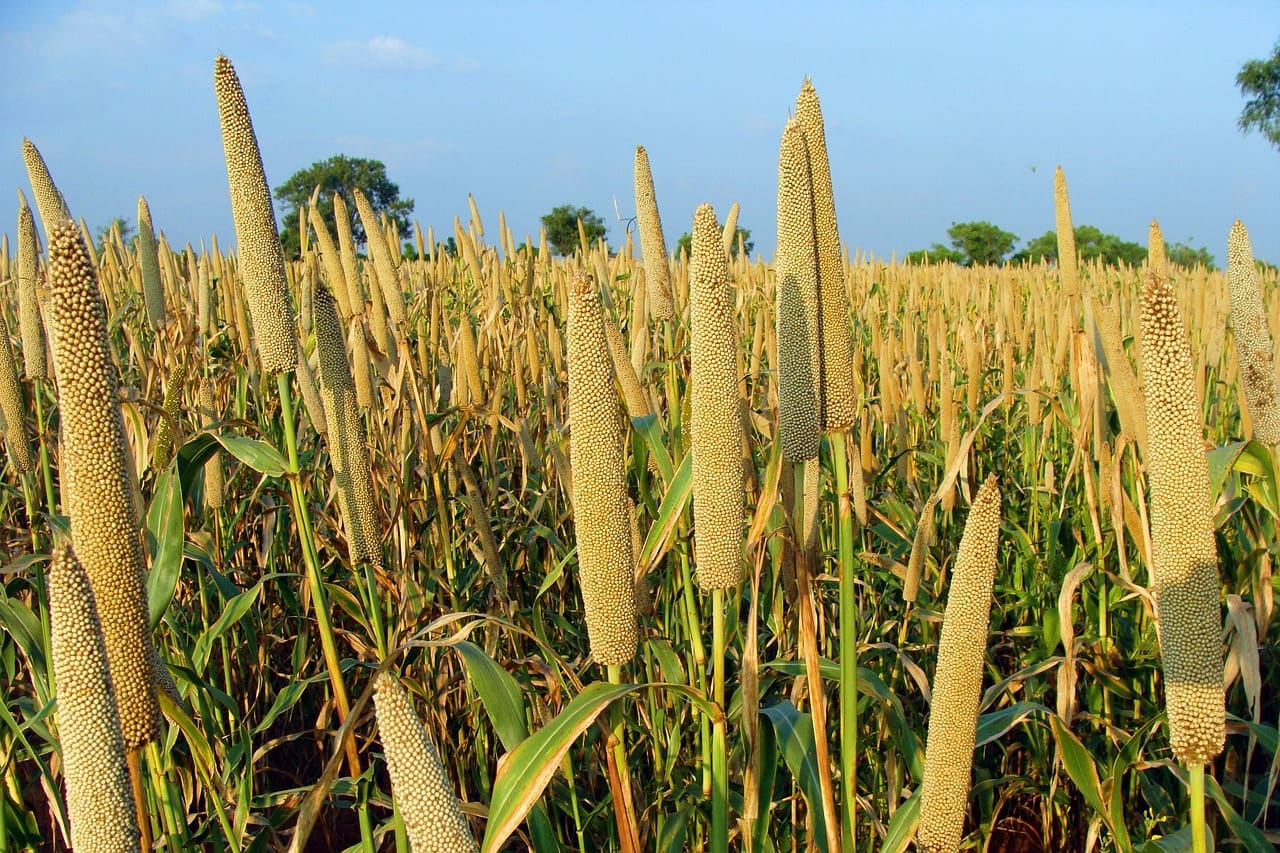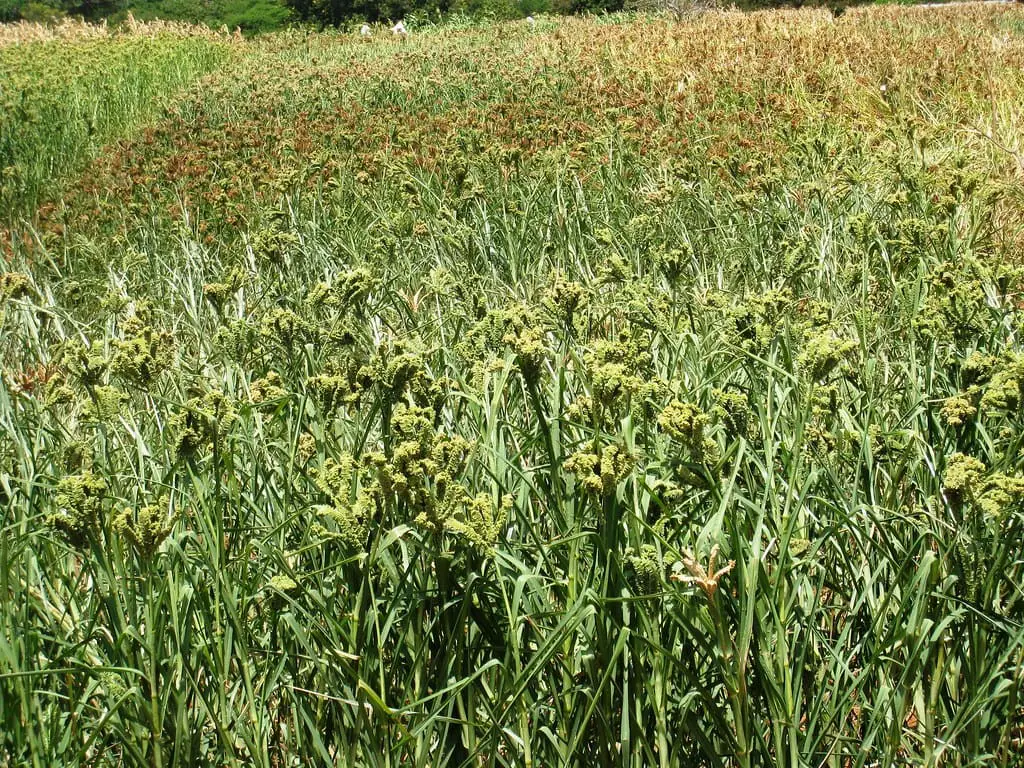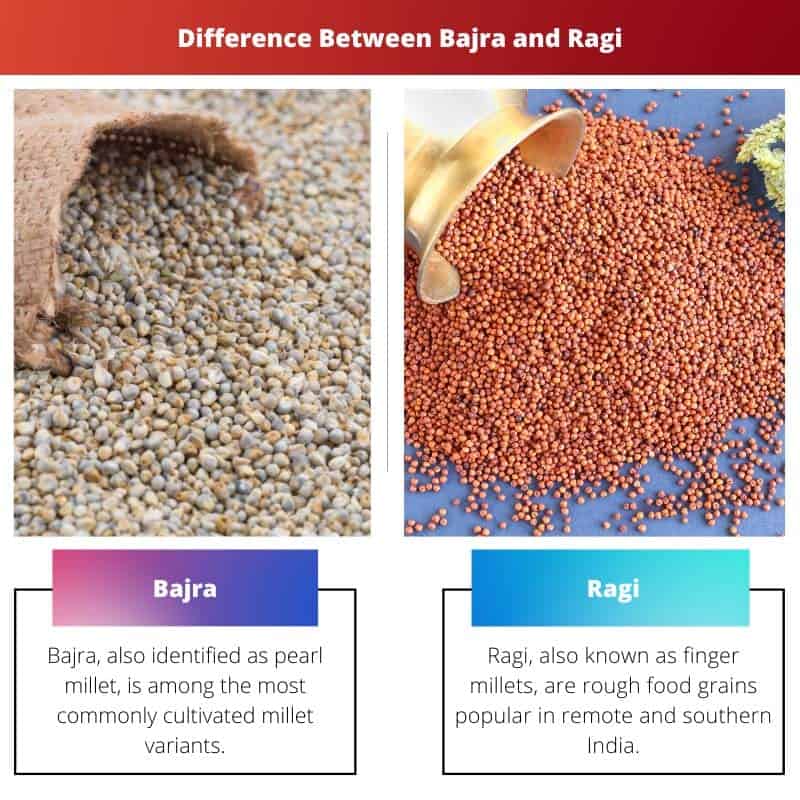Millets are a bunch of extremely variable small-seeded grass species that are widely cultivated as cereals all over the globe. They are small, round, and can be white, grey, red, or yellow.
The most common millets are Bajra, Ragi, and Jowar. Millets are regaining popularity as people become more aware of them, and here we will learn the differences between two common millets, bajra, and ragi.
Key Takeaways
- Bajra is pearl millet, while ragi is finger millet, both nutrient-rich cereal grains.
- Bajra thrives in arid regions and has a higher tolerance for drought than ragi, which prefers cooler climates.
- Bajra contains more protein and fat than ragi, while ragi has a higher calcium content and are more easily digestible.
Bajra vs Ragi
Bajra, also known as pearl millet, is a tall grass-like plant that produces small, round seeds used in several dishes, including roti, porridge, and snacks. Ragi, also known as finger millet, is a cereal crop that is grown primarily in India and Africa. The seeds are small, red, or brown.

Bajra, also identified as pearl millet, is among the most commonly cultivated millet variants. It is mainly cultivated in Africa and India.
Since ancient times, it has been a dietary staple for Indians. Rajasthan is India’s biggest manufacturer of bajra. These small brown grains have quite a nutty, bittersweet aftertaste.
Ragi, also known as finger millets, are rough food grains popular in remote and southern India. Ragi grain is used to make flour that consists of half wheat and half ragi grain.
It is used to make a variety of beverages due to its high fermentation value.
Comparison Table
| Parameter of comparison | Bajra | Ragi |
|---|---|---|
| Another name | Pearl millet | Finger millet |
| Texture | Nutty and bittersweet aftertaste. | Tiny, red to dark brown seeds, also having a slightly sweet and bitter taste. |
| How to use | Grounded to flour and is utilised in making a variety of baking items such as breads, muffins, cookies, and chapatis. | Used to make a variety of Indian cuisines, like roti, namkeen, hot halwa, noodles, etc. |
| Availability | Very easily available. | Not easily available in the market. |
| Shelf life | Must be freshly grounded every day and, at maximum, the powder can be stored for three to four days before it gets rancid. | Can be preserved for 1 year or more if properly stored, and its flour can be used upto 6 months. |
What is Bajra?
The classic Hindi word for the Pennisetum glaucum crop, also identified as pearl millet, is bajra. The grain is cultivated mainly in Africa and India, where it is an important supply of nutrients.
It is, however, cultivated and utilized in many other parts of the world. The edible seeds of pearl millet crops are referred to as bajra.
They come in a variety of colors, including white, yellow, grey, brown, and bluish-purple. The seeds are prepared as a cereal grain, but they can also be finely ground and utilized as flour.
Bajra, like other grains, has been associated with notable health benefits merely because it is a whole grain food.
Consuming whole grains like bajra on a routine basis may reduce the risk of chronic conditions such as diabetes, heart problems, as well as certain cancers.
However, having to eat bajra may provide additional health advantages. If you’re burning calories, including whole grain foods with a minimal calorie content in your diet, such as bajra, may be advantageous.
On the whole, most millet varieties are regarded as a healthy grain option for diabetics. Fiber-rich foods, particularly cereal fibers like bajra, have also been linked to better results in the control of diabetes and other chronic illnesses.
Bajra is high in a variety of nutrients that promote healthy skin, hair, and nails.

What is Ragi?
Ragi is a highly nutritive millet that looks similar to mustard seeds.
Finger millet is particularly beneficial because it consists of the amino acid methionine, which is deficient in the dietary habits of the poor, who rely on starchy food items like cassava, plantain, polished rice, or maize meal.
Ragi, a grain high in calcium, protein, iron, and fiber, has long been used in a variety of food products around the world.
Because the bottom of the ragi grain is hard to digest, the grain is hulled before being used. The nutrient quality is not destroyed because this procedure does not eliminate or damage the germ.
Realizing the medical benefits of ragi, people have begun combining it with other grains such as rice and wheat to make local recipes such as idli, upma, and rotis.
Ragi can be found in millet and flour form. It is accessible in a variety of pack sizes as well as in larger quantities.
As with any other food purchased in bulk, ensure that the bins incorporating the millet are coated and that the seller has a high product turnover to confirm maximum freshness.
Whether you buy millet in huge quantities or a packaged jar, ensure there is no moisture present.

Main Differences Between Bajra and Ragi
- Bajra is also known as pearl millet while ragi is known as finger millet.
- Bajra has a nutty texture with a bittersweet aftertaste while Ragi is tiny, red to dark brown seeds, also having a slightly sweet and bitter taste.
- Bajra is grounded to flour and is used in making a variety of baking items such as bread, muffins, cookies, and chapatis. On the other hand, ragi flour is used to make a variety of Indian cuisines, like roti, namkeen, hot halwa, noodles, etc.
- Bajra is easily available in the market while Ragi is comparatively difficult to be available.
- Bajra powder must be freshly grounded every day and, at maximum, the powder can be stored for three to four days before it gets rancid. While ragi grains can be preserved for 1 year or more if properly stored, their flour can be used for up to 6 months.

- https://www.indianjournals.com/ijor.aspx?target=ijor:anft&volume=4&issue=1&article=006
- https://www.indianjournals.com/ijor.aspx?target=ijor:ijan&volume=20&issue=2&article=010&type=pdf




